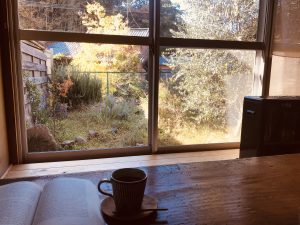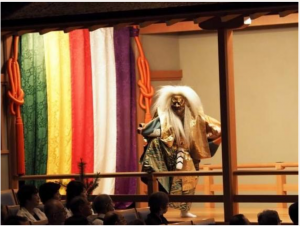 “An empty sky of music, a rain of flowers, strange fragrance on every side; all these are no common things, nor is this cloak that hangs upon the pine tree…”
“An empty sky of music, a rain of flowers, strange fragrance on every side; all these are no common things, nor is this cloak that hangs upon the pine tree…”
These are some of the beautiful words spoken in that ancient Noh play, Hagoromo, or The Feather Mantle.
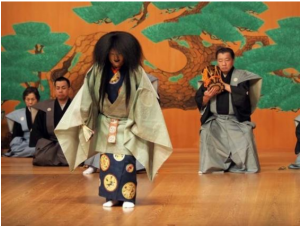 It is a traditional story of an interaction between a fisherman and a Tennin, an aerial spirit or celestial dancer. It takes place in an old world that feels both simpler and more susceptible to visits from aerial spirits.
It is a traditional story of an interaction between a fisherman and a Tennin, an aerial spirit or celestial dancer. It takes place in an old world that feels both simpler and more susceptible to visits from aerial spirits.
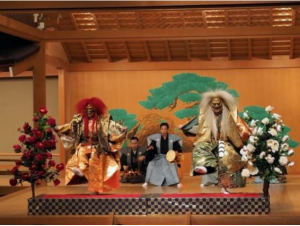 Though most of us just read these stories, visitors to Nara will have the chance to learn and feel the power of Noh and what this story is about. Twice in early February, 2020, a Noh experience and workshop will be held at Kasugano International Forum IRAKA in Nara City. First, participants will have the chance to view a performance and learn about the story, the roles in Noh, and the instruments used in the performance. Then in the workshop, participants can try on some of the costumes and play one of the instruments. It is a rare chance to cross into a world that is usually exclusive to performers and professionals, and feel both the power of this story and the sights, sounds, and textures of the traditional Japanese art.
Though most of us just read these stories, visitors to Nara will have the chance to learn and feel the power of Noh and what this story is about. Twice in early February, 2020, a Noh experience and workshop will be held at Kasugano International Forum IRAKA in Nara City. First, participants will have the chance to view a performance and learn about the story, the roles in Noh, and the instruments used in the performance. Then in the workshop, participants can try on some of the costumes and play one of the instruments. It is a rare chance to cross into a world that is usually exclusive to performers and professionals, and feel both the power of this story and the sights, sounds, and textures of the traditional Japanese art. 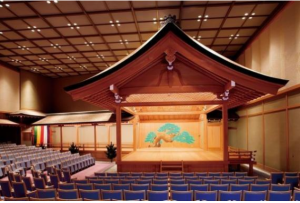

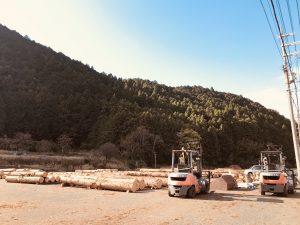 Cafe Le Repos isn’t in the first place you’d expect a cafe to be. A few minutes up the Yoshino River from Kintetsu Yamato-Kamiichi Station, we make a tight right turn to head over the river on the Imosebashi Bridge. After crossing the bridge, we see a lumber auction yard, with dozens of large Yoshino cedar logs lined up. To the left is an auto shop, and it’s in a corner of that auto shop that I found the cozy Cafe Le Repos.
Cafe Le Repos isn’t in the first place you’d expect a cafe to be. A few minutes up the Yoshino River from Kintetsu Yamato-Kamiichi Station, we make a tight right turn to head over the river on the Imosebashi Bridge. After crossing the bridge, we see a lumber auction yard, with dozens of large Yoshino cedar logs lined up. To the left is an auto shop, and it’s in a corner of that auto shop that I found the cozy Cafe Le Repos.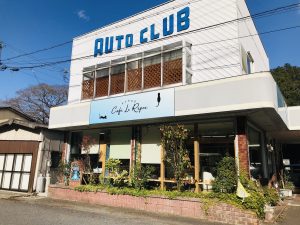 Despite having just opened a few months ago, they were busy with regular customers chatting away at the center table. The inside of the cafe is a beautiful example of how the wood, grown in mountains up the river and gathered as logs outside, can be used to provide a warm and comfortable dining environment. The owner informed me that the day’s special was sold out, so our only option was the keema curry. It was spicy enough to wake me up, while still being incredibly flavorful. My lunch also included a small cup of somen noodles and radish pickles, which served to balance out the spice of the keema curry. When the owner wasn’t busy in the kitchen, she would casually chat with us or the group of regulars at the large table.
Despite having just opened a few months ago, they were busy with regular customers chatting away at the center table. The inside of the cafe is a beautiful example of how the wood, grown in mountains up the river and gathered as logs outside, can be used to provide a warm and comfortable dining environment. The owner informed me that the day’s special was sold out, so our only option was the keema curry. It was spicy enough to wake me up, while still being incredibly flavorful. My lunch also included a small cup of somen noodles and radish pickles, which served to balance out the spice of the keema curry. When the owner wasn’t busy in the kitchen, she would casually chat with us or the group of regulars at the large table.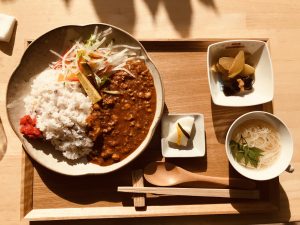 Located near the auction yard, saw mills, and auto shop, Cafe Le Repos seems like it’d be a warm lunch escape for the many people working hard outside in the area. However, I also think it’s worthwhile for visitors to the area to make the journey over the Imosebashi Bridge, across the Yoshino River, and relax in a place a little out of the ordinary. Even if it’s your first visit, I hope you can feel as comfortable as one of the locals.
Located near the auction yard, saw mills, and auto shop, Cafe Le Repos seems like it’d be a warm lunch escape for the many people working hard outside in the area. However, I also think it’s worthwhile for visitors to the area to make the journey over the Imosebashi Bridge, across the Yoshino River, and relax in a place a little out of the ordinary. Even if it’s your first visit, I hope you can feel as comfortable as one of the locals.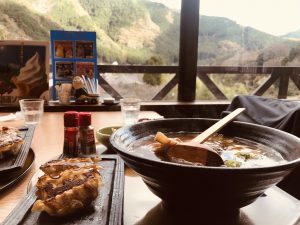 Another term for ramen in Japan is Chuka-men, or “Chinese noodles”. I ordered the Chuka-men combination with gyoza, and enjoyed the great scenery while I waited for my food. Sato offers a wide view of the endless mountains of Yoshino cedar, and the calming Yoshino River running below.
Another term for ramen in Japan is Chuka-men, or “Chinese noodles”. I ordered the Chuka-men combination with gyoza, and enjoyed the great scenery while I waited for my food. Sato offers a wide view of the endless mountains of Yoshino cedar, and the calming Yoshino River running below. 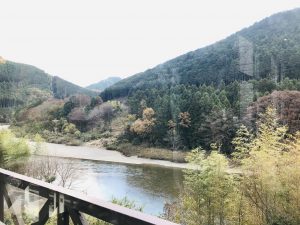 My food eventually arrived on a tray that seemed like it could cover the entire table, and in addition to my noodles and gyoza, included rice, stewed vegetables, and pickles. My bowl of noodles had a soy sauce based broth with slices of pork, half a hard-boiled egg, green onions, and popular Japanese vegetables like napa cabbage and bamboo shoots. The gyoza was perfect! Crispy, flavorful, and huge! After finishing everything on my tray, I wasn’t sure if I’d be able to walk out the door.
My food eventually arrived on a tray that seemed like it could cover the entire table, and in addition to my noodles and gyoza, included rice, stewed vegetables, and pickles. My bowl of noodles had a soy sauce based broth with slices of pork, half a hard-boiled egg, green onions, and popular Japanese vegetables like napa cabbage and bamboo shoots. The gyoza was perfect! Crispy, flavorful, and huge! After finishing everything on my tray, I wasn’t sure if I’d be able to walk out the door.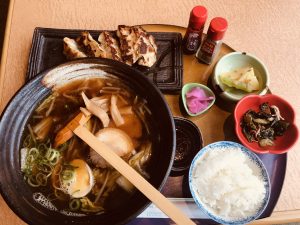 Signed photos and autographs near the entrance show how popular of a stop Sato is among celebrities who pass through. Sato is also a very popular place among the locals, and even with all that fame, the staff always makes an effort to remember faces and names. Even if it is your one and only visit there, I am sure they will welcome you very warmly! As I mentioned, they still have a giant menu, so I recommend going there multiple times and trying something new every time.
Signed photos and autographs near the entrance show how popular of a stop Sato is among celebrities who pass through. Sato is also a very popular place among the locals, and even with all that fame, the staff always makes an effort to remember faces and names. Even if it is your one and only visit there, I am sure they will welcome you very warmly! As I mentioned, they still have a giant menu, so I recommend going there multiple times and trying something new every time.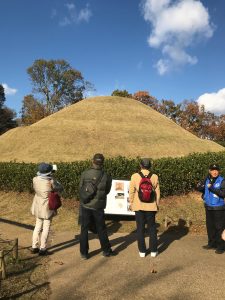
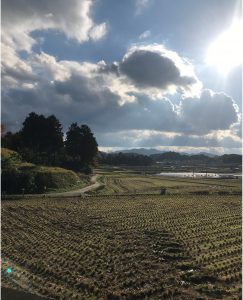
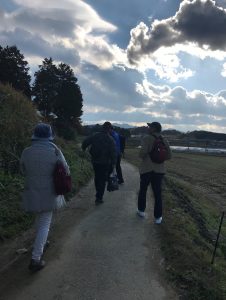
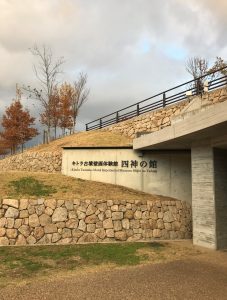 I arrived at Kitora Tomb and first headed to the Shijin-no-yakata in the Center for Preservation of Kitora Tumulus Mural Paintings.
I arrived at Kitora Tomb and first headed to the Shijin-no-yakata in the Center for Preservation of Kitora Tumulus Mural Paintings.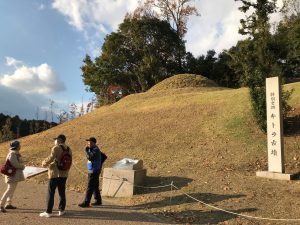
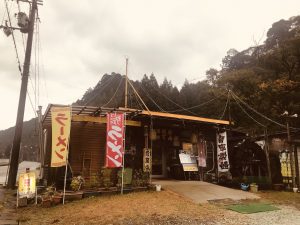 Or at least, that’s how it feels when I visit Yottenka in Yoshino Town. It’s a small, stand-alone wooden shop, attached to old truck beds, and with a wooden water wheel in front. Inside is the kind of warm atmosphere that is difficult for visitors to Japan to discover on their own. Shelves of comic books, a box of local fruit, a counter facing the kitchen, and a well-worn center table. In addition to standard flavors like miso, soy sauce, and salt ramen, they have a special sesame ramen, a spicy beansprout ramen, and even chilled ramen for hot summer days.
Or at least, that’s how it feels when I visit Yottenka in Yoshino Town. It’s a small, stand-alone wooden shop, attached to old truck beds, and with a wooden water wheel in front. Inside is the kind of warm atmosphere that is difficult for visitors to Japan to discover on their own. Shelves of comic books, a box of local fruit, a counter facing the kitchen, and a well-worn center table. In addition to standard flavors like miso, soy sauce, and salt ramen, they have a special sesame ramen, a spicy beansprout ramen, and even chilled ramen for hot summer days.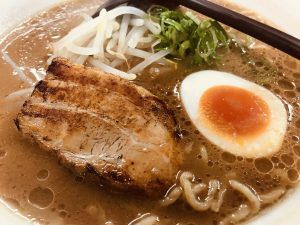 When I went there for lunch the other day, I ordered the miso ramen and gyoza set. The noodles seemed to absorb the flavorful miso soup, as did the slice of pork, which slowly softened as I saved it for last. The gyoza came out hot and fresh, smelling of garlic as I dipped each bite into the spicy red oil. I said “gochisosama” to kind old man and exited the shop with a full stomach.
When I went there for lunch the other day, I ordered the miso ramen and gyoza set. The noodles seemed to absorb the flavorful miso soup, as did the slice of pork, which slowly softened as I saved it for last. The gyoza came out hot and fresh, smelling of garlic as I dipped each bite into the spicy red oil. I said “gochisosama” to kind old man and exited the shop with a full stomach. 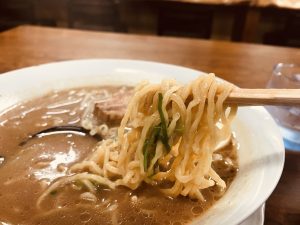
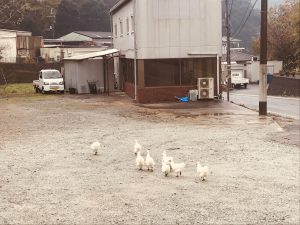
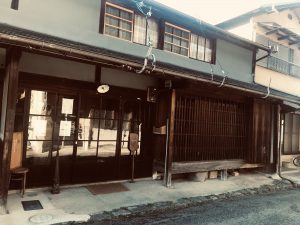 The city of Uda covers a vast amount of space in southern Nara prefecture, and includes mountains, rice fields, and many other crops. In the heart of its Oh-Uda area is a large souvenir shop, an onsen hot spring bath, and a traditional townscape. There are some unique restaurants and cafes in this townscape, and I had the pleasure of visiting one just the other day.
The city of Uda covers a vast amount of space in southern Nara prefecture, and includes mountains, rice fields, and many other crops. In the heart of its Oh-Uda area is a large souvenir shop, an onsen hot spring bath, and a traditional townscape. There are some unique restaurants and cafes in this townscape, and I had the pleasure of visiting one just the other day. 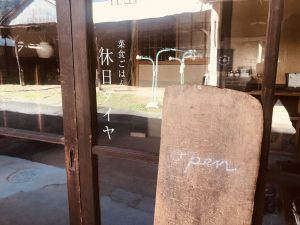 Kyujitsu-Daiya, or “holiday schedule”, is a vegan cafe and restaurant located in that townscape. In addition to not using any animal products, they make the effort to use organic vegetables, and even organic coffee. It is a warm and cozy environment located in a traditional Japanese house, with a number of quiet, unique spots for guests to sit and eat.
Kyujitsu-Daiya, or “holiday schedule”, is a vegan cafe and restaurant located in that townscape. In addition to not using any animal products, they make the effort to use organic vegetables, and even organic coffee. It is a warm and cozy environment located in a traditional Japanese house, with a number of quiet, unique spots for guests to sit and eat. 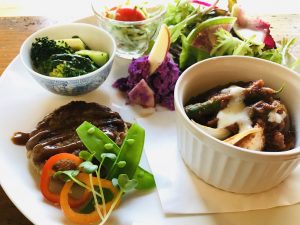 I sat in a floor seat facing the win dow of a small garden, and after I’d read a few pages in my book, the owner brought out my lunch and explained each item. It included a hamburger patty made from garbanzo beans and lotus root, a sweet potato salad made from apples, tofu okara, and soy milk mayonnaise, a bowl of brown rice, and soup made from homemade miso. It’s the kind of meal that makes you want to take your time and enjoy every bite.
I sat in a floor seat facing the win dow of a small garden, and after I’d read a few pages in my book, the owner brought out my lunch and explained each item. It included a hamburger patty made from garbanzo beans and lotus root, a sweet potato salad made from apples, tofu okara, and soy milk mayonnaise, a bowl of brown rice, and soup made from homemade miso. It’s the kind of meal that makes you want to take your time and enjoy every bite. 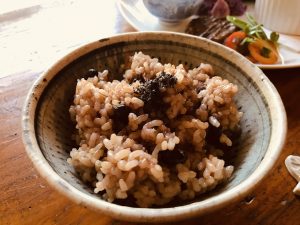
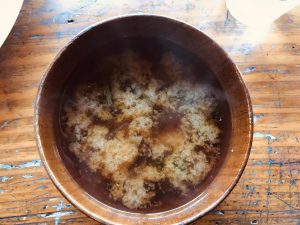 After my lunch, I had a hot cup of hot organic coffee while I sat by the window and continued reading. In a more touristy location, I might not have been able to take my time and enjoy such a quiet place. Homemade miso, local vegetables, I felt like I had a nice chance to appreciate the beauty the countryside has to offer, especially in southern Nara.
After my lunch, I had a hot cup of hot organic coffee while I sat by the window and continued reading. In a more touristy location, I might not have been able to take my time and enjoy such a quiet place. Homemade miso, local vegetables, I felt like I had a nice chance to appreciate the beauty the countryside has to offer, especially in southern Nara.